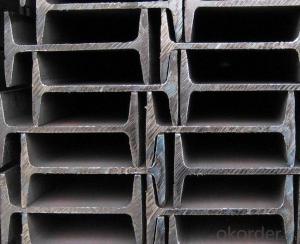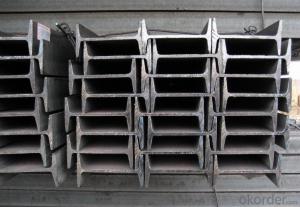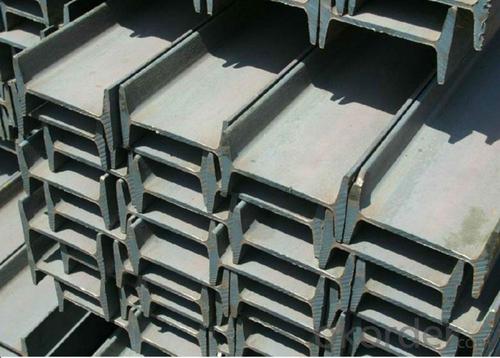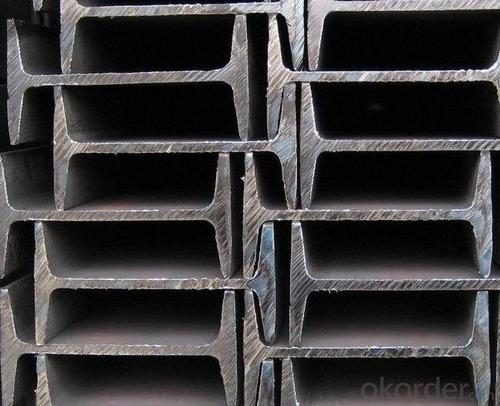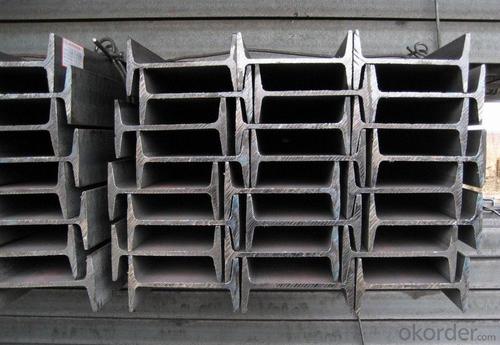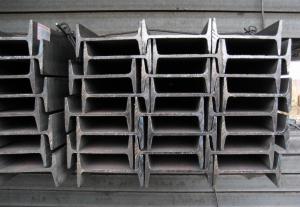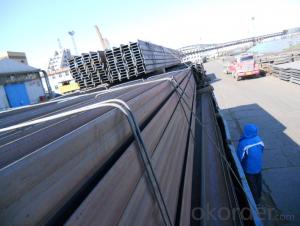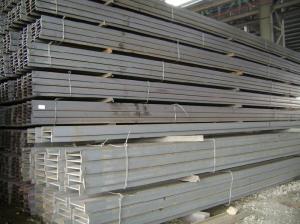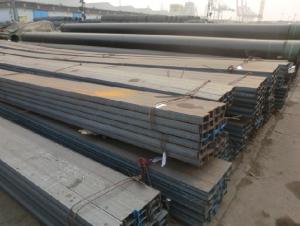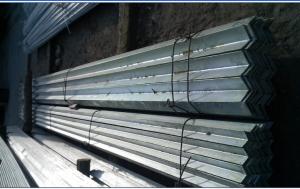IPE/IPEAA in European Standard with Competitive Price
- Loading Port:
- Tianjin
- Payment Terms:
- TT OR LC
- Min Order Qty:
- 25 m.t
- Supply Capability:
- 10000 m.t/month
OKorder Service Pledge
OKorder Financial Service
You Might Also Like
Product Description:
OKorder is offering high quality Hot Rolled Steel I-Beams at great prices with worldwide shipping. Our supplier is a world-class manufacturer of steel, with our products utilized the world over. OKorder annually supplies products to European, North American and Asian markets. We provide quotations within 24 hours of receiving an inquiry and guarantee competitive prices.
Product Applications:
1. Supporting members, most commonly in the house raising industry to strengthen timber bears under houses. Transmission line towers, etc
2. Prefabricated structure
3. Medium scale bridges
4. It is widely used in various building structures and engineering structures such as roof beams, bridges, transmission towers, hoisting machinery and transport machinery, ships, industrial furnaces, reaction tower, container frame and warehouse etc.
Product Advantages:
OKorder's Steel I-Beams are durable, strong, and resist corrosion.
Main Product Features:
· Premium quality
· Prompt delivery & seaworthy packing (30 days after receiving deposit)
· Corrosion resistance
· Can be recycled and reused
· Mill test certification
· Professional Service
· Competitive pricing
Product Specifications:
1. Invoicing on theoretical weight or actual weight as customer request
2. Standard: EN10025, GB Standard, ASTM
3. Grade: Q235B, Q345B, SS400, ASTM A36, S235JR, S275JR
4. Length: 5.8M, 6M, 9M, 12M as following table
5. Sizes: 80mm-270mm
Dimensions(mm) | |||||
h | b | s | t | Mass Kg/m | |
IPE80 | 80 | 46 | 3.80 | 5.20 | 6.00 |
IPE100 | 100 | 55 | 4.10 | 5.70 | 8.10 |
IPE120 | 120 | 64 | 4.80 | 6.30 | 10.40 |
IPE140 | 140 | 73 | 4.70 | 6.90 | 12.90 |
IPE160 | 160 | 82 | 5.00 | 7.40 | 15.80 |
IPE180 | 180 | 91 | 5.30 | 8.00 | 18.80 |
IPE200 | 200 | 100 | 5.60 | 8.50 | 22.40 |
IPE220 | 220 | 110 | 5.90 | 9.20 | 26.20 |
IPE240 | 240 | 120 | 6.20 | 9.80 | 30.70 |
IPE270 | 270 | 135 | 6.60 | 10.20 | 36.10 |
FAQ:
Q1: Why buy Materials & Equipment from OKorder.com?
A1: All products offered byOKorder.com are carefully selected from China's most reliable manufacturing enterprises. Through its ISO certifications, OKorder.com adheres to the highest standards and a commitment to supply chain safety and customer satisfaction.
Q2: How do we guarantee the quality of our products?
A2: We have established an advanced quality management system which conducts strict quality tests at every step, from raw materials to the final product. At the same time, we provide extensive follow-up service assurances as required.
Q3: The products are invoicing on theoritical weight or on actual weight?
A3: We can do it in both manners, according to the customers' request.
Images:
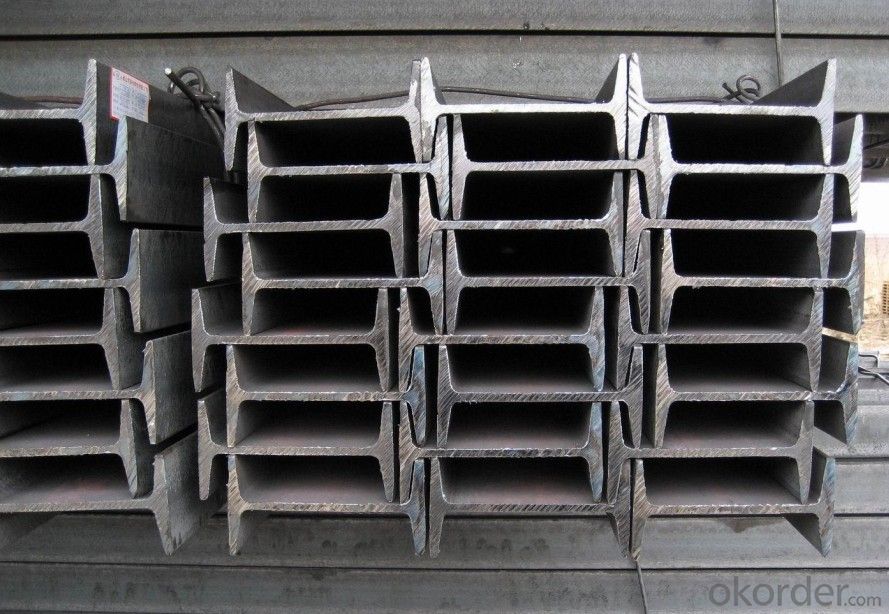
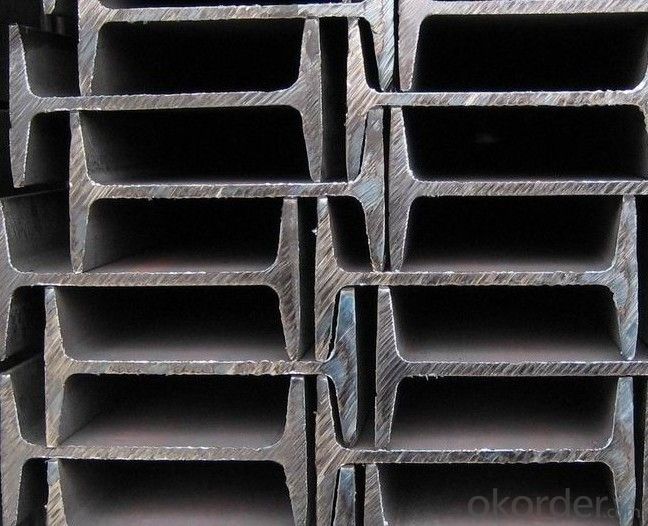
- Q: How do steel I-beams contribute to the overall architectural aesthetics of a structure?
- Steel I-beams contribute to the overall architectural aesthetics of a structure in several ways. Firstly, the sleek and clean lines of steel I-beams can create a modern and contemporary look, making them a popular choice in many architectural designs. The straight, parallel lines formed by the I-beams can add a sense of order and symmetry to a structure, enhancing its overall visual appeal. Additionally, steel I-beams offer the advantage of being able to span long distances without the need for additional support columns or walls. This allows for more open and spacious interior spaces, which can contribute to the aesthetic appeal of a structure. The absence of intrusive columns or walls can create an uninterrupted flow and sense of unity in the design, making the space more visually pleasing. Moreover, steel I-beams can be exposed and left visible in the design, adding an industrial and contemporary touch to the overall aesthetics. By showcasing the strength and structural integrity of the building, these exposed beams can create a sense of authenticity and honesty in the design, which is often appreciated by architects and occupants alike. Furthermore, steel I-beams can be used creatively to enhance the visual impact of a structure. They can be curved, twisted, or arranged in unique patterns, creating interesting and dynamic architectural features. These artistic applications of steel I-beams can make a structure stand out and become a focal point, giving it a distinctive and memorable appearance. In summary, steel I-beams contribute to the overall architectural aesthetics of a structure by providing sleek lines, spacious interiors, industrial charm, and creative design possibilities. Their strength, versatility, and ability to span long distances make them a popular choice among architects seeking to create visually appealing and functional structures.
- Q: Are steel I-beams recyclable?
- Indeed, steel I-beams can be recycled. Thanks to its durability and high scrap value, steel is widely considered one of the most recycled materials globally. Once steel I-beams reach the end of their useful lifespan, they can undergo recycling and be transformed into new steel products. The recycling procedure consists of melting down the steel to eliminate any impurities, after which it is fashioned into new I-beams or other steel products. By recycling steel I-beams, not only are we conserving natural resources, but we are also reducing the energy consumption and carbon emissions linked to the production of new steel from raw materials.
- Q: Can steel I-beams be used to create mezzanine floors?
- Certainly, mezzanine floors can indeed be created using steel I-beams. These intermediate floors, which are typically inserted between the primary floors of a building, serve to generate extra usable space. The construction industry frequently employs steel I-beams owing to their robustness, longevity, and capacity to bear substantial loads. Given their ability to provide the requisite structural reinforcement necessary for supporting the added weight and ensuring the structure's safety, steel I-beams are highly suitable for fabricating mezzanine floors. Moreover, they can be tailored to suit the precise dimensions and specifications of the mezzanine floor, rendering them an adaptable and efficient choice for this particular application.
- Q: What are the different types of steel I-beam connections for staircases?
- Staircases commonly use different types of steel I-beam connections to ensure stability and strength. Let's explore some of these connection options: 1. The most frequently used connection in steel staircases is the welded connection. This involves welding the I-beam to the stringers or other support members, creating a strong and durable connection that guarantees stability. 2. Another option is the bolted connection, where high-strength bolts are used to attach the I-beam to the stringers or support members. Bolted connections offer convenience as they allow for easy disassembly and reassembly if needed. However, they may not be as robust as welded connections. 3. A cleat connection involves bolting a steel plate, known as a cleat, underneath the I-beam and connecting it to the stringers or support members. This type of connection adds extra support and stability to the staircase. 4. Plate connections utilize steel plates to connect the I-beam to the stringers or support members. These plates are typically welded or bolted to both the I-beam and the support members, ensuring a secure connection. 5. In certain staircases, the I-beam may require connection to a vertical column for additional support. This connection is achieved through welding or bolting, depending on the specific design requirements. It's important to consider various factors, such as load-bearing capacity, design requirements, and construction methods, when selecting the appropriate steel I-beam connection for a staircase. Consulting with a structural engineer or professional staircase designer is recommended to ensure the chosen connection type meets the specific needs of the project.
- Q: Can steel I-beams be used in residential high-rise building construction?
- Yes, steel I-beams can be used in residential high-rise building construction. They are commonly used as structural components due to their strength, durability, and ability to support heavy loads. Steel I-beams provide the necessary stability and structural integrity required for tall residential buildings.
- Q: How do steel I-beams perform in high-snow load areas?
- Steel I-beams perform well in high-snow load areas due to their strength and durability. The structural integrity of steel makes it capable of withstanding heavy snow loads without significant deformation or failure. Additionally, the inherent rigidity of steel I-beams helps distribute the weight of the snow evenly, reducing the risk of structural damage.
- Q: Can Steel I-Beams be used for industrial buildings?
- Certainly, industrial buildings can incorporate steel I-beams. The construction of industrial buildings often relies on steel I-beams because of their remarkable strength, durability, and flexibility. These beams offer exceptional structural support, enabling wider spans and greater load capacities, which makes them perfect for industrial purposes. They exhibit resilience against heavy loads and ensure stability and resistance in adverse weather conditions. Furthermore, steel I-beams can be conveniently tailored and modified to fulfill precise design specifications, making them highly favored for efficient and economical construction in industrial buildings.
- Q: Are steel I-beams resistant to rot and decay?
- No, steel I-beams are not resistant to rot and decay. Steel is a durable and strong material, but it is still susceptible to corrosion and rust. If exposed to moisture or certain chemicals, steel can undergo a process called oxidation, resulting in rust formation. To prevent this, steel beams are often galvanized or coated with anti-corrosive materials. However, over time, these protective coatings can wear off, leaving the steel vulnerable to rot and decay. Regular maintenance and proper care are necessary to ensure the longevity and integrity of steel I-beams.
- Q: Can steel I-beams be used for commercial office buildings?
- Indeed, it is common to utilize steel I-beams during the construction of commercial office buildings. These I-beams serve to offer structural support and possess the capability to withstand substantial loads, rendering them exceptionally suitable for the creation of expansive, multi-level structures. Their impressive attributes include remarkable strength, durability, and fire resistance, thus contributing to their widespread preference in commercial construction ventures. Moreover, steel I-beams can be readily tailored and manufactured to meet the precise design specifications of an office building.
- Q: Can steel I-beams be used for seismic-resistant structures?
- Indeed, seismic-resistant structures can utilize steel I-beams. Steel is widely employed in construction due to its exceptional strength and ductility, making it well-suited for withstanding seismic forces. I-beams, in particular, are frequently employed in seismic-resistant structures owing to their structural efficiency and capacity to withstand bending and torsional forces. In the event of an earthquake, buildings encounter lateral forces that can cause substantial damage. Steel I-beams are designed to evenly distribute these forces throughout the structure, thus minimizing the risk of structural failure. Moreover, steel possesses the advantage of being a flexible material, enabling it to absorb and dissipate seismic energy, thereby reducing the impact of the earthquake on the structure. To guarantee the seismic resistance of steel I-beams, engineers adhere to specific design guidelines and codes that take into account factors such as the seismic activity of the location, soil conditions, and building height. These guidelines aid in determining the appropriate size, shape, and spacing of the I-beams to provide the necessary strength and flexibility for seismic resistance. Additionally, steel structures offer the advantage of being more easily repaired and retrofitted after an earthquake compared to other materials. If damage occurs, damaged components can be replaced or repaired without compromising the overall structural integrity. Nevertheless, it is important to note that the seismic resistance of a structure cannot solely rely on the utilization of steel I-beams. It necessitates a comprehensive design approach that incorporates other seismic-resistant measures such as bracing systems, base isolators, and damping devices. The overall design should consider the specific seismic hazards of the region and adhere to local building codes and regulations. In conclusion, steel I-beams can be effectively employed in seismic-resistant structures due to their exceptional strength, flexibility, and ability to distribute seismic forces. However, proper design and engineering practices, in conjunction with other seismic-resistant measures, are necessary to ensure the overall safety and performance of the structure during an earthquake.
Send your message to us
IPE/IPEAA in European Standard with Competitive Price
- Loading Port:
- Tianjin
- Payment Terms:
- TT OR LC
- Min Order Qty:
- 25 m.t
- Supply Capability:
- 10000 m.t/month
OKorder Service Pledge
OKorder Financial Service
Similar products
Hot products
Hot Searches
Related keywords

